Part 2: Marble Mountain Wilderness
Read Part 1
In conjunction with the Klamath National Forest and the California Native Plant Society Vegetation Team, I completed a mapping and inventory project for Pacific silver fir (Abies amabilis) in California. The first part of this project was along the Siskiyou Crest, near the Oregon-California border. This post is about the populations in the Marble Mountain Wilderness.
In 2016 I embarked on a mapping and inventory project for yellow-cedar (Callitropsis nootkatensis) in California. At the time, I called yellow-cedar California’s rarest conifer. In 2019, new discoveries on the north slopes of Copper Butte and Preston Peak brought the total hectares of yellow-cedar in California to ~21 hectares. With this new data, and that collected in this project, we now know Abies amabilis is California’s rarest conifer*! See table below for stand data summary.
*This excludes the neoendemic California cypresses.
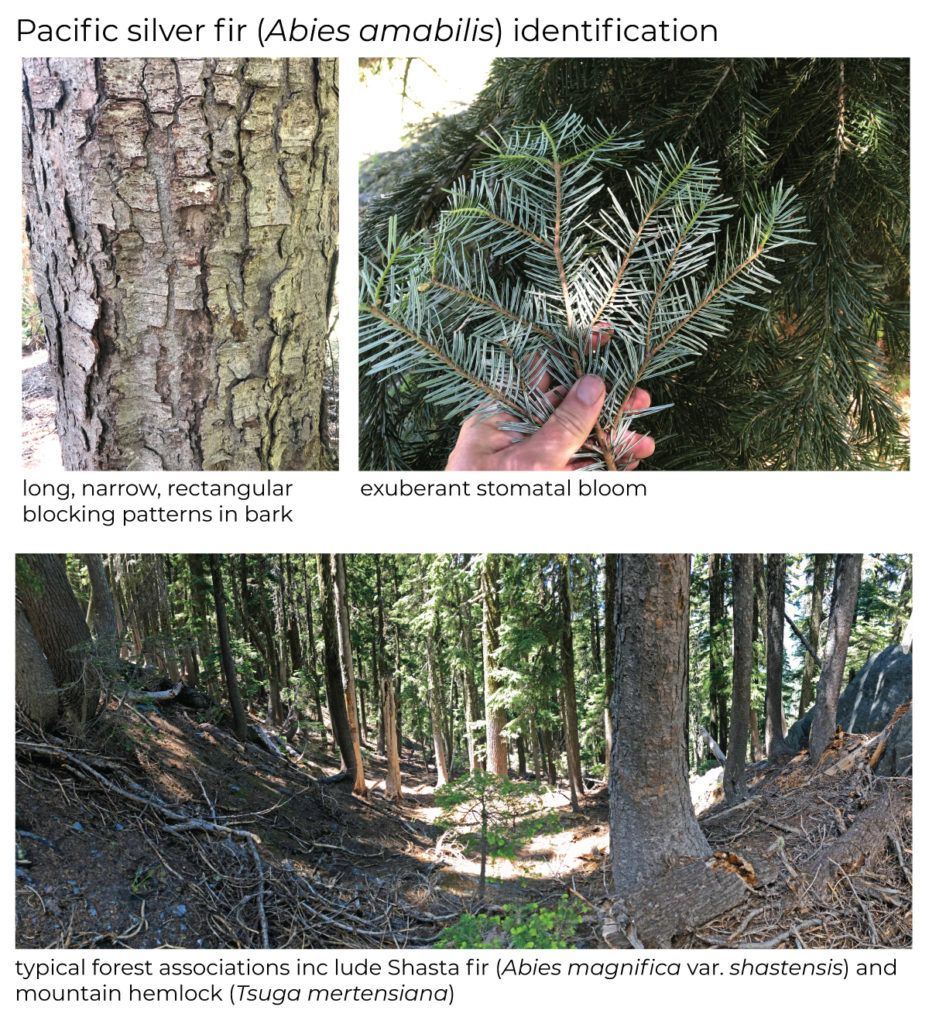
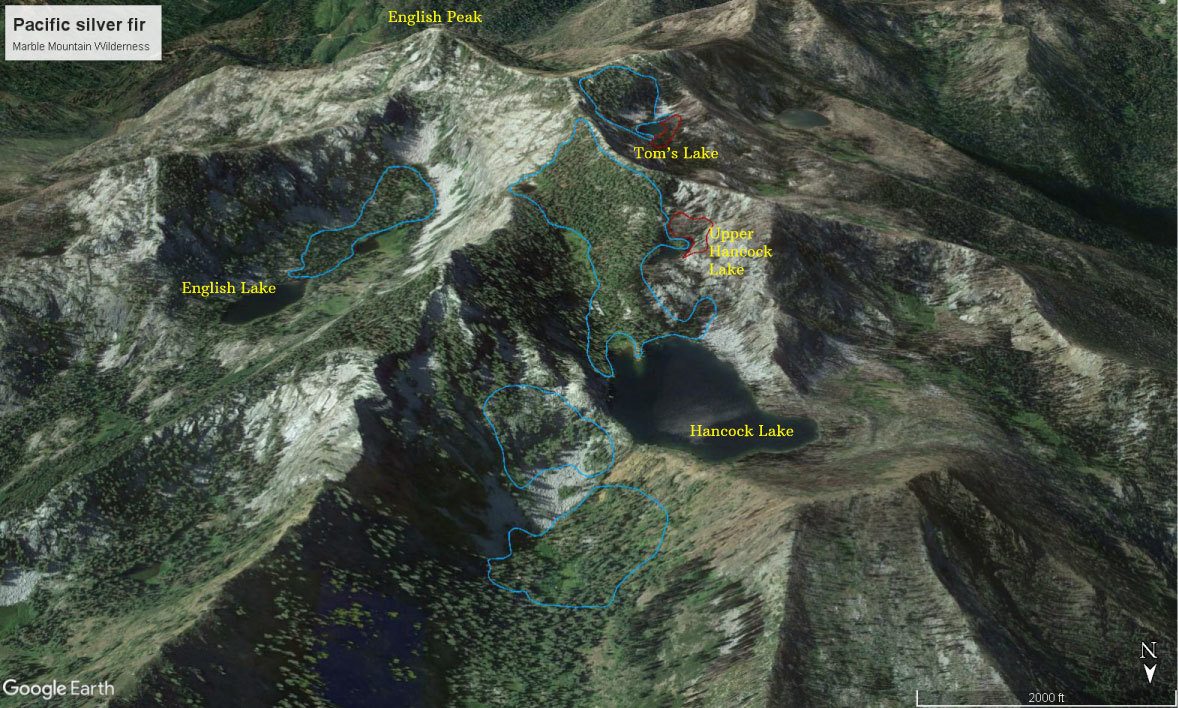
Forest Health Summary
The health of the Marble Mountain stands is similar to that of the Siskiyou Crest, though fire has impacted an overall smaller area. The 2017 Wallow Fire touched on two stands in similar geographical locations. Both Toms Lake and Upper Hancock Lake had small areas of stand-replacing fire reach into previous silver fir locations. Though small, mortality approached 100% in each stand. We also found similar branch swelling to what was reported on the Siskiyou Crest (see image below) as well as evidence of fir engraver beetle (Scolylus ventralis) mortality at around 5%.

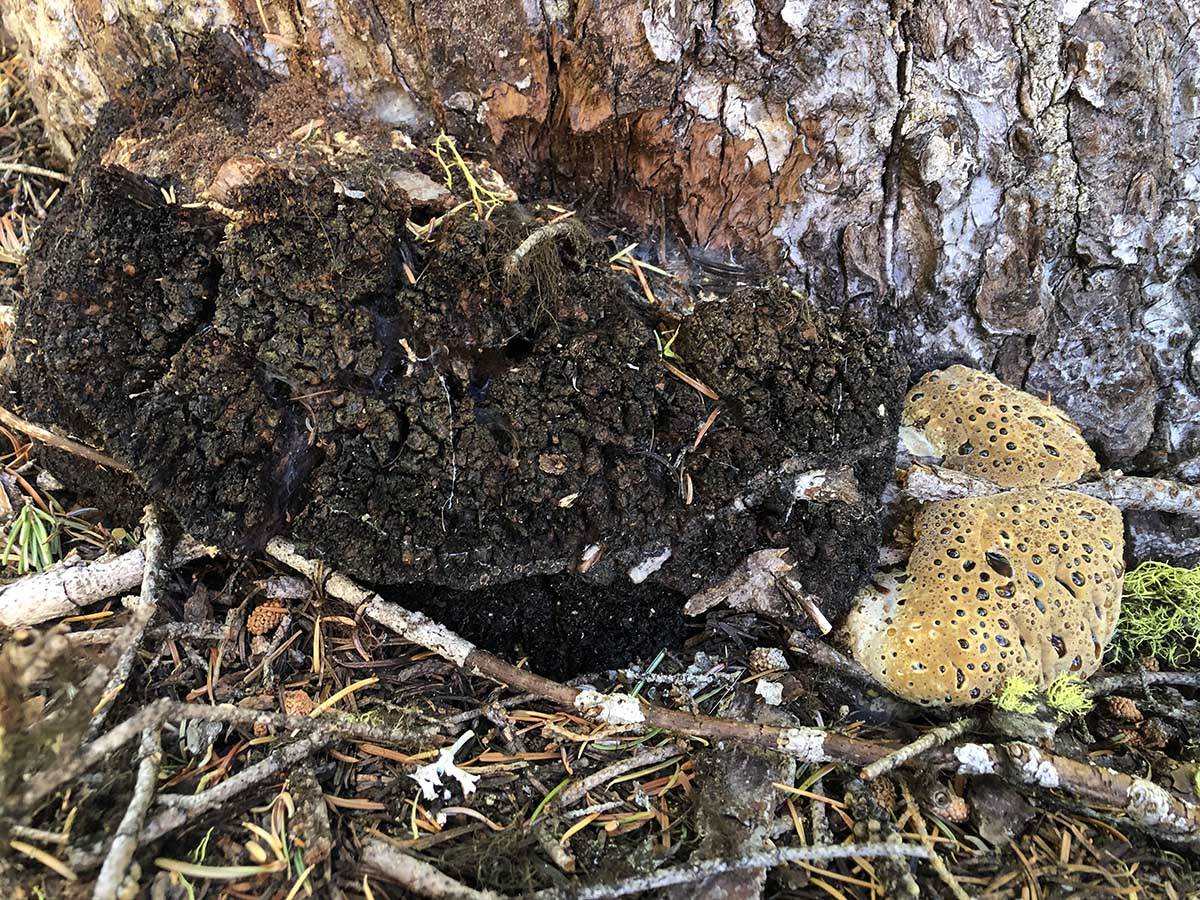
Picture summary
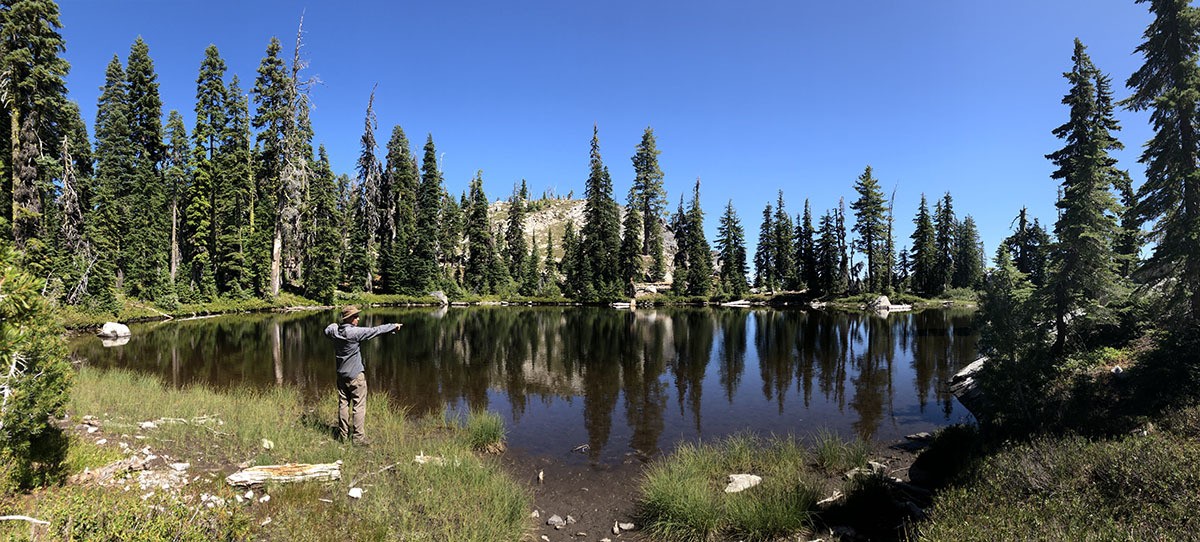
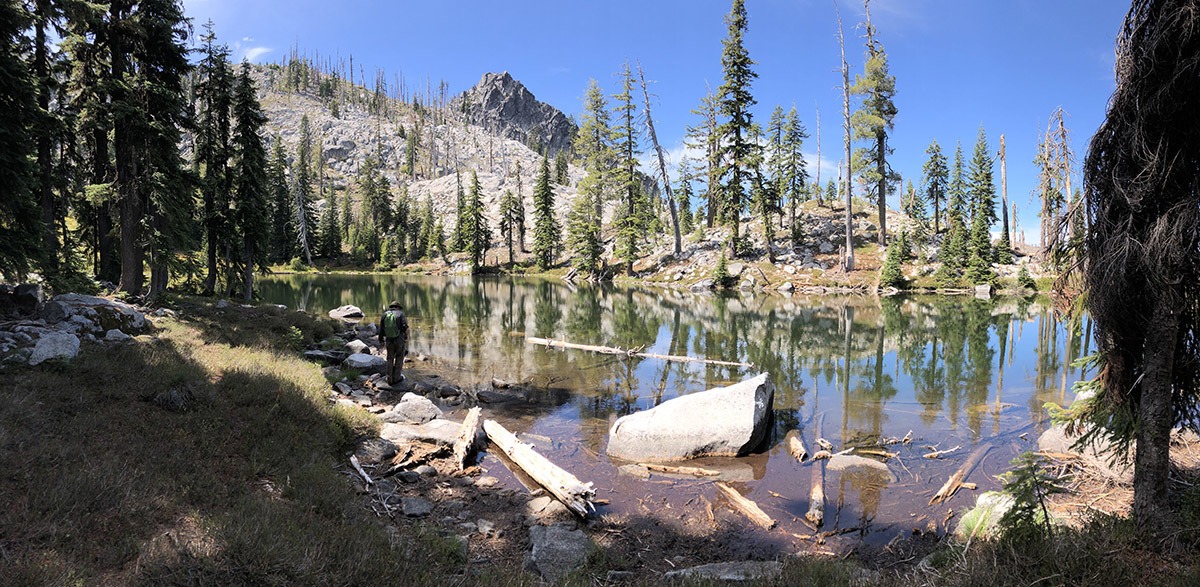


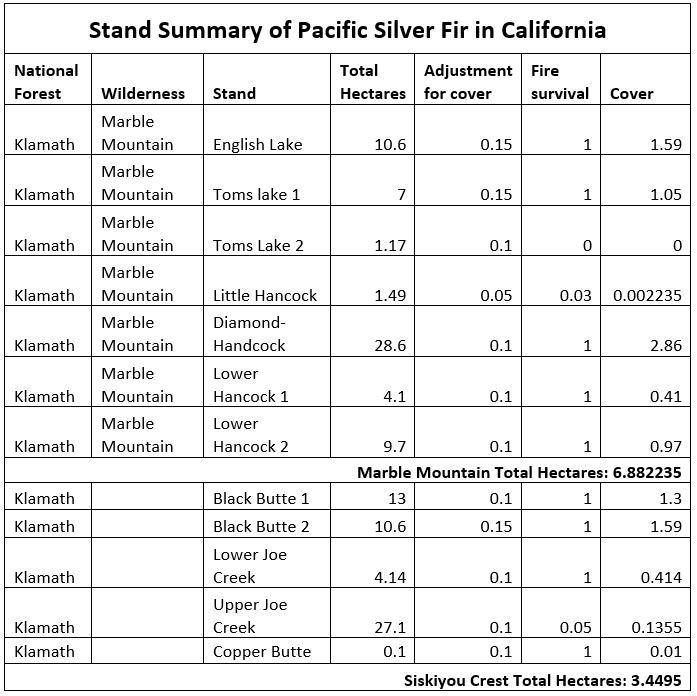
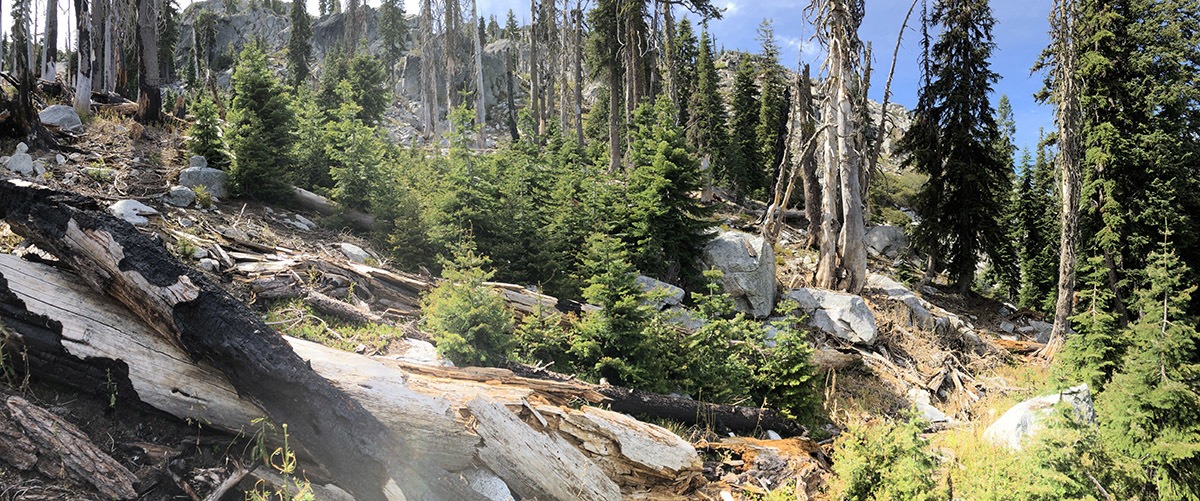
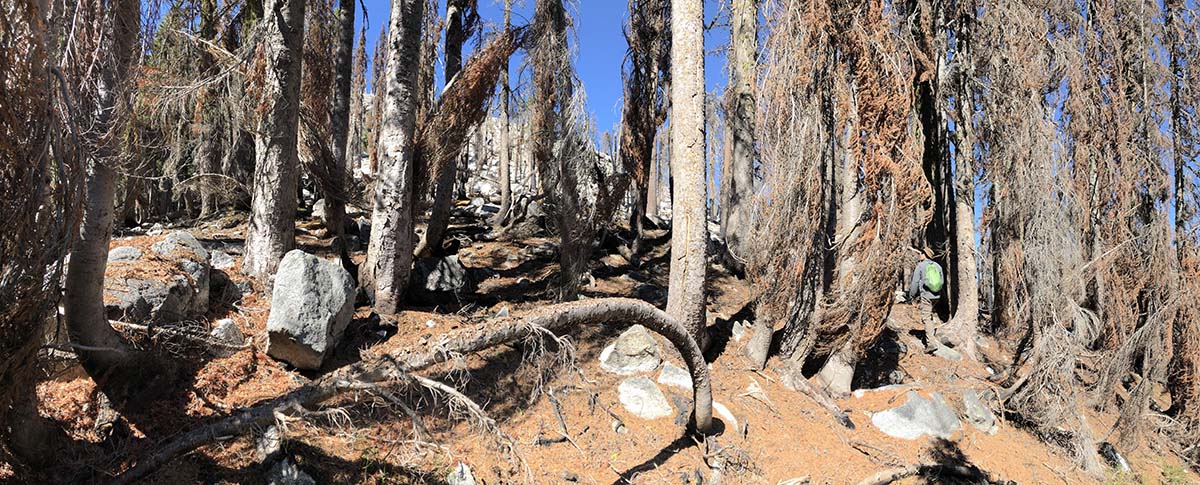
Thanks Michael! Are there any silver fir on Marble Mountain? I saw a reference that had an “X” there, denoting a single siting?
Mark – none documented so probably not. Subalpine fir though!
Bro — SICK mapping you did that is easy to access on this website/string. Well done. So Pacific Silver FIre is rarer than Engelman Spruce? Foxtail Pine? Subalpine Fir? In California. Man – I must say I’m a bit jealous that you have gotten/found time to do this. I’ve always wanted to do more detailed mapping of both Foxtail Pine and Brewers Spruce in Siskiyou-Trinity Counties. And Engleman Spruce. Well done. I’m a veteran biologist myself – specializing in Forestry biology. Just too busy making money and working to be able to find side time during the field season to go do something like you are doing/did. Only lakes I havent been to in the Marbles are the Hancock/English lakes. Now I gotta go there. Well done!!
Thanks Brian- It is a passion project for sure! I have started some initial estimations for all the rare conifers of the Klamath and, while I have not ground-truthed PIEM, PIBA, and ABLA, I predict silver fir are much less common. Hopefully those mapping projects happen soon and we know for sure!
Great info. I never heard of oak bracket! Fir engravers are often associated with drought.
Thanks Michael, I had to learn more about oak bracket — thought it was something else at first. Cheers!